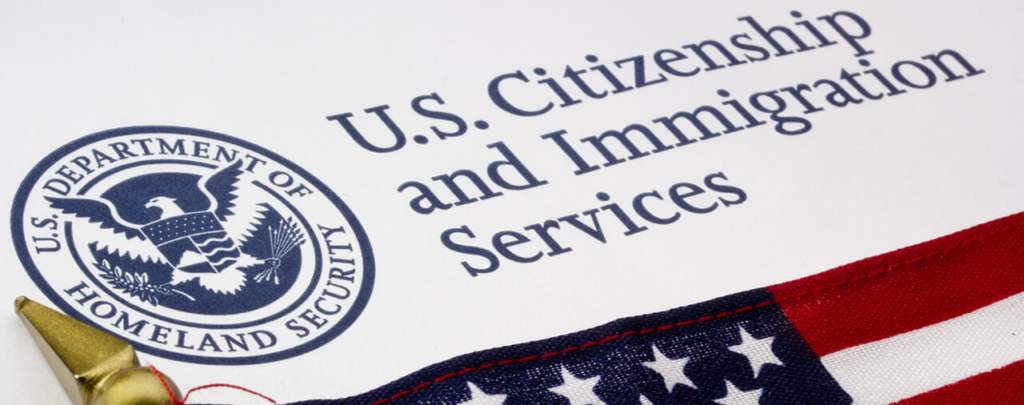- Introduction: Attorney General Reviews Whether There is a Duress Exception to Persecution of Others Bar
- Issue
- Supreme Court Had Previously Considered the Case: Negusie v. Holder, 555 U.S. 511 (2009)
- The Opinion of the Board in Matter of Negusie, 27 I&N Dec. 347 (BIA 2018)
- Attorney General Referral: Matter of Negusie, 27 I&N Dec. 481 (A.G. 2018)
- Conclusion
Introduction: Attorney General Reviews Whether There is a Duress Exception to Persecution of Others Bar
On June 28, 2018, the Board of Immigration Appeals (BIA) published an important precedent decision in Matter of Negusie, 27 I&N Dec. 347 (BIA 2018) [PDF version]. In the decision, which was written over a dissent, the Board held that an alien who is being barred from establishing eligibility for asylum or withholding of removal based on the persecution of others ground may claim a duress defense, “which is limited in nature.” The majority went on to set the minimum threshold requirements for a successful duress defense to the persecution of others bar to asylum and withholding.
On October 18, 2018, Attorney General Jeff Sessions published a new decision in Matter of Negusie, 27 I&N 481 (A.G. 2018) [PDF version], wherein he referred the BIA’s decision to himself for review. In so doing, he automatically stayed Matter of Negusie pending his review.
In this article, we will briefly examine what the Board held in Matter of Negusie and the dissenting opinion, the parameters of the Attorney General’s referral, and what the Attorney General’s review of Matter of Negusie may mean going forward.
Issue
An alien who ordered, incited, assisted, or otherwise participated in the persecution of others on the basis of race, religion, nationality, membership in a particular social group, or political opinion is ineligible for asylum (section 208(b)(2)(A)(i) of the Immigration and Nationality Act (INA)) and withholding of removal (section 241(b)(3)(B)(i)).
The question before the Board in Matter of Negusie was whether an alien can advance a duress defense to the persecution of others bar to asylum and withholding — that is, whether evidence that the alien only engaged in the persecution of others under duress can mitigate the bar to asylum and withholding of removal. If such a defense does not exist, then evidence of duress, even if founded, is irrelevant to the asylum and removal proceedings.
Supreme Court Had Previously Considered the Case: Negusie v. Holder, 555 U.S. 511 (2009)
To fully understand Matter of Negusie, we must first examine how the case ended up before the Board. The instant Negusie case arrived at the Board via remand from the Supreme Court of the United States eight years ago in Negusie v. Holder, 555 U.S. 511 (2009) [PDF version]. In that decision, the Supreme Court held that the persecutor of others bar to asylum and withholding is ambiguous on the question of whether duress is relevant to its application. However, the Court found that the Board had committed legal error in holding in an unpublished decision that it was bound to conclude that the motivation of the individual engaging in the persecution was irrelevant by the Supreme Court decision in Fedorenko v. United States, 449 U.S. 490 (1981) [PDF version]. For this reason, the Supreme Court remanded to the United States Court of Appeals for the Fifth Circuit — which had affirmed the Board’s unpublished decision — with instructions to remand to the Board for a new discussion of whether there is a duress exception to the persecution of others bar.
The majority in the Supreme Court’s decision left open the question of whether a decision of the Board on this issue would be entitled to administrative deference under Chevron USA Inc. v. Natural Resources Defense Council, Inc., 467 U.S. 837 (1984) [PDF version] from the judiciary under Chevron if it adhered to its unpublished decision and held that there is no duress exception to the persecution of others bar. However, several justices joined or authored concurring opinions taking positions on this issue. Justice Clarence Thomas took the position in a concurrence that the statute is unambiguous and that there is no implied duress exception to the persecutor of others bar. Justice Stephen Breyer joined a concurring opinion taking the position that the Court should have resolved the issue in favor of there being a duress exception, but that the case should be remanded for instructions on the parameters of applying such an exception. Justice Samuel Alito joined a concurring opinion which agreed that the statute was unambiguous, but that the Board would be entitled to deference if it held that there was no duress exception. Chief Justice John Roberts and Justice Ruth Bader Ginsburg were in the majority, not taking a position on whether a holding by the Board that there is no implied duress exception would be entitled to Chevron deference.
The Opinion of the Board in Matter of Negusie, 27 I&N Dec. 347 (BIA 2018)
On remand, the Board relied extensively on legislative history and as well as an analysis of international law provisions, which it found should inform the interpretation of the persecution of others bar. It then held that there is an implied duress exception to the persecution of others bar,but that this duress exception “is limited in nature.”
The Board then set forth “the minimum threshold requirements” of an availing duress defense. It held that the alien must establish, by the “preponderance of the evidence” (weight of the evidence) that:
1. He acted under an imminent threat of death or serious bodily injury to himself or others;
2. He reasonably believed that the threatened harm would be carried out unless he acted or refrained from acting;
3. He had no reasonable opportunity to escape or otherwise frustrate the threat;
4. He did not place himself in a situation in which he knew or reasonably should have known that he would likely be forced to act or refrain from acting; and
5. He knew or reasonably should have known that the harm he inflicted was not greater than the threatened harm to himself or others.
Thus, the Board found that there is a duress exception to the persecution of others bar but that an alien must, at a minimum, establish each of the five above points by the weight of the evidence in order to qualify for a duress exception. Furthermore, in the case of an application for asylum, the decision on whether to grant an alien asylum is within the discretion of the adjudicator.
Interestingly, after establishing its rules for the duress exception, the Board found that the applicant in the instant case did not qualify for a duress exception due to a variety of factors.
Dissenting Opinion
Board Member Garry Malphrus issued a concurring and dissenting opinion in Matter of Negusie. He concurred to the extent that the Board dismissed the applicants appeal, but he dissented with respect to its holding that there is an implied duress exception from the persecutor of others bar. Board Member Malphrus took the position that the Board’s analysis of international law was flawed and should have placed more significance on the fact that Congress has, for nearly four decades, not amended the persecutor of others bar to include any reference to motivation. He also expressed concerns that the majority’s approach to evaluating duress claims was unwieldly and would lead to inconsistent adjudications in different cases. He concluded by stating that the decision whether to create a duress exception is Congress’s, not the Board’s.
Attorney General Referral: Matter of Negusie, 27 I&N Dec. 481 (A.G. 2018)
Nearly five months after the Board published its decision in Matter of Negusie, the Attorney General directed the Board to refer the case to him for review under 8 C.F.R. 1003.1(h)(1)(i). The Board’s decision is automatically stayed pending the Attorney General’s review in accordance with Matter of Haddam, A.G. Order No. 2380-2001 (Jan. 19, 2001) [included in PDF version]. This means that Matter of Negusie is not binding during the pendency of the Attorney General’s review.
The Attorney General requested briefing on the following issue:
Whether coercion and duress are relevant to the application of the Immigration and Nationality Act’s persecutor bar.
The parties in the case will be required to submit briefs not exceeding 15,000 words on or before November 8, 2018. Interested amici may submit briefs not exceeding 9,000 words on or before November 15, 2018. The parties may submit reply briefs not exceeding 6,000 words on or before November 15, 2018.
Conclusion
Although it is unclear how the Attorney General will ultimately decide the issue of the proposed duress defense, the nature and circumstances of the review suggest that, at the very least, the Board’s decision will be narrowed. One could reasonably infer that the Attorney General is more likely than not to conclude that there is no duress exception to the persecution of others bar. However, it is worth noting that the wording of the referral in no way guarantees this result. Furthermore, it is not impossible that a new Attorney General may be in place before the review is completed.
Regardless of the outcome of the Attorney General’s review, it is likely that the issue will be litigated further, possibly all the way back to the Supreme Court. We will continue to update the website with more information on this litigation as it becomes available.
To learn more asylum and withholding of removal, please see our website’s sections on asylum and refugee protection [see category] and removal and deportation defense [see category]. You may see our full list of articles on Attorney General, BIA, and Administrative Appeals Office/Immigration and Naturalization Service (INS) precedent decisions in our growing index [see index].



